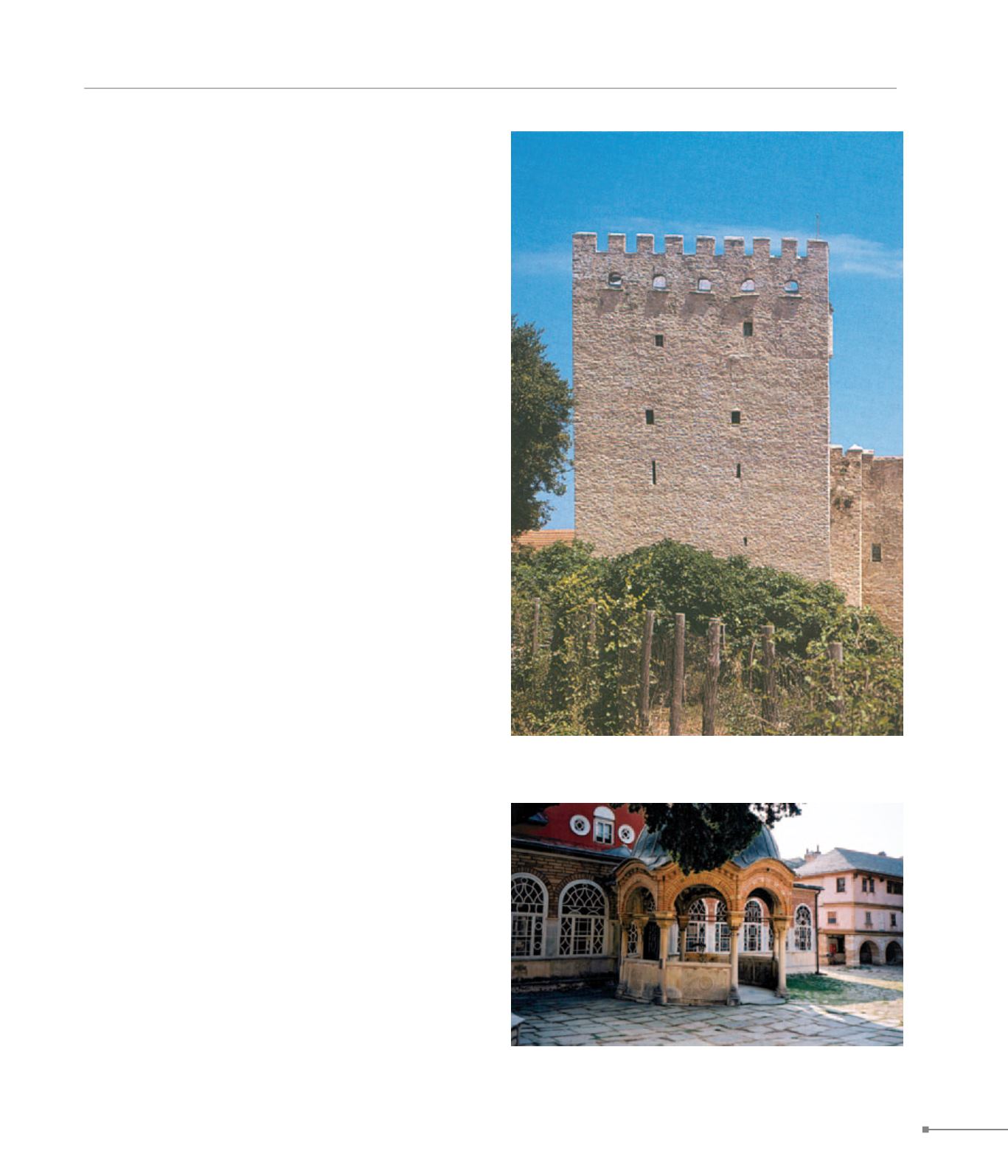
Great Lavra Monastery.
Karakalou Monastery.
MACEDONIA
117
79.
Philotheou Monastery.
The foundation of the monastery was in the 10th c., and it was
originally known as Pteris monastery. It was financially sup-
ported by Andronicus II Palaeologus. No Byzantine structures
are preserved.
80.
Karakalou Monastery.
The name of the monastery has occurred in documents since
the 11th c. but there are no Byzantine structures preserved
today, due to extensive restorations and reconstructions in the
Post-Byzantine years, financed by princes of Moldo-Wallachia.
78.
Great Lavra Monastery.
The first monastery on Mount Athos was founded in 963 by
Aghios Athanasios the Athonite, with the financial support of
Emperor Nikephoros Phokas. The original enclosure along
with other structures is the result of care by Athanasius ac-
knowledged as the founder of the monastic state of Mount
Athos. The catholicon, built in 963-4, is a tetrastyle cross-in-
square church with double narthex that was expanded into
a lite, and two chapels of the cross-in-square, four-columned
type. This catholicon was the first example of the so-called
athonite triconch type, in which the N and S cross-arms end
in semicircular conches forming the choroi, where chanters
stood. This design of church has been widely disseminated
throughout Mount Athos and outside its borders. Its concept
has been attributed to Aghios Athanasios, who is believed to
have added the two conches at the catholicon of Lavra in 1002,
after he had reconstructed the Protaton church in Karyes with
the same approach. Most of the existing decoration of the inte-
rior dates from subsequent periods. Marble inlays on the floor
are from the 11th c. Particularly remarkable are the doors with
brass panelling, a rare example of this type of metalwork, dat-
ing from the 10th c. A marble phiale is preserved in front of the
catholicon, featuring carved panels and a marble lekane with
a brass fountain (11th c.). The cross-shaped refectory is con-
sidered work of the founder Aghios Athanasios, just like the
first phase of the chapel of Panagia Koukouzelissa. Among
the wings of the large complex, which are of various periods,
the so-called tower of Tsimiskis, which probably dates from
earlier than the 14th c., stands out. The shipyard, to which a
large tower was added circa the 13th c., is considered to be
of the same period as the monastery. A Mid-Byzantine phase
is also detected at the funerary church of Aghioi Apostoloi,
where a floor with marble inlays is preserved.
78. Great Lavra monastery, phiale (Μονή Μεγίστης Λαύρας, φιάλη)
78. Great Lavra monastery, Tsimiskis tower (Μονή Μεγίστης Λαύρας,
πύργος του Τσιμισκή)


